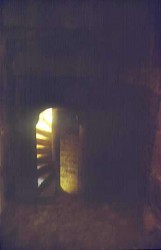|
|
|
| Gnosis and Its Foundations |
 According to Antonin Gadal, the spiritual source from which Catharism emanated is undeniably Gnostic. According to Antonin Gadal, the spiritual source from which Catharism emanated is undeniably Gnostic.
Here are some of the explanations he used to give:
‘Gnosis is the knowledge of all that is related to God, to Jesus Christ, to the return to divine life. It is the Christian synthesis of all the philosophies of liberation scattered in the world before the coming of Christ. Like all the spiritual traditions, the Gnosis considers the world as an illusion, a pseudo creation, unstable, imperfect. The only, unique reality is in God.
Without God’s knowledge, men chain themselves to an unreal, material world. To go beyond matter in order to get closer to God, to consider sufferings as a basis for purification, to follow, tirelessly, the path of Perfection, is, to summarize, trying to get as close as possible to the purity of Jesus Christ, the divine Master.
How to achieve this? By the practice of the “Endura”!
|
 Breaking Free from Illusion Breaking Free from Illusion
To get away from matter, we must break with the links that tie us up to the world of the senses.
Breaking free from matter is to break the hold it exerts on our senses, to conquer the individual or collective illusions it produces; it is to renounce the ego.
Only then shall we be able to come back spiritually to the world and work for its redemption because then matter has no hold on us anymore. Such is the work of initiation of the Perfects, the Pure Ones or “Bonshommes”, the Cathar priests.
Detachment, renunciation of all forms of instincts and passions, self-abnegation: poverty in spirit, the “Endura” of the Cathars.’
|
|
|
|
|




